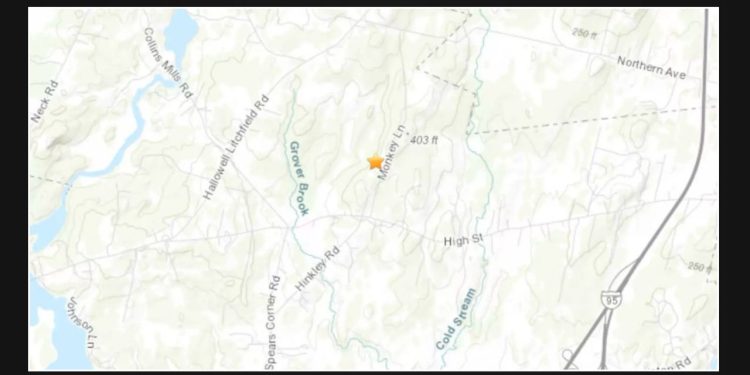On Sunday (July 28) night, Maine was shaken by a 2.8-magnitude earthquake, as reported by the United States Geological Survey.
On Sunday, the USGS reported that the earthquake occurred in Gardiner at a depth of 8.1 kilometers or roughly 5.03 miles. According to the USGS, 1,067 people reported feeling the earthquake at the time of publication.
According to DigitalMaine.com, Maine experiences an average of only one earthquake per year with a magnitude ranging between 3.0 and 3.9 since 1975. Additionally, the state experiences an earthquake with a magnitude of 4.0 or greater every 10 to 15 years. It is worth noting that a recent earthquake in Maine was reported just days after two larger earthquakes were reported in Hermleigh, Texas.
On Monday (July 22), the city experienced a 4.9-magnitude earthquake, followed by a 5.0-magnitude earthquake on Friday (July 26).
According to the United States Geological Survey, the first earthquake in Texas occurred several hours after a 5.7-magnitude earthquake hit Panama on Monday. The earthquake’s epicenter was located at a depth of approximately 3.0 kilometers, or roughly two miles.
According to the United States Geological Survey, the Panama earthquake occurred the day after a 6.2-magnitude earthquake hit Guatemala in the early hours of Sunday, July 21. The earthquake’s epicenter was located at a depth of approximately 265.5 kilometers (approximately 165 miles).
Just two days after a 7.4-magnitude earthquake hit Chile on Friday, July 19th, the Guatemala earthquake struck, as reported by the United States Geological Survey. The earthquake’s epicenter was located at a depth of approximately 117.4 kilometers or 72.9 miles.
Just hours after earthquakes shook the Philippines and southern Africa, Canada was hit by its own earthquake. The earthquake in the Philippines had a depth of 621.0 kilometers (approximately 386 miles), while the one in southern Africa had a depth of 10.0 kilometers (about six miles).
According to the USGS, earthquakes are not very common in Africa. However, on June 10, 2023, Johannesburg, South Africa, experienced a 5.0-magnitude earthquake.
According to the United States Geological Survey, the earthquakes in the Philippines and Africa occurred 12 days after Peru was hit by a 7.2-magnitude earthquake on June 28. The earthquake’s epicenter was located in Atiquipa and was 28.0 kilometers deep, equivalent to about 17.4 miles.
Just a few days after a 4.1-magnitude earthquake shook California on June 24th, a devastating earthquake hit Peru. The United States Geological Survey reported that this earthquake occurred at a depth of 12.1 kilometers (around 7.5 miles) and was centered in Lamont.
Just a few weeks after a 4.5-magnitude earthquake rocked California on June 9, the United States Geological Survey reported another quake with a magnitude of 4.1. The epicenter of this recent earthquake was located in The Geysers, which happens to be the largest geothermal field in the world. This area is situated in the Mayacamas Mountains and the epicenter was found to be around 3.6 kilometers deep (approximately 1 mile).
A 4.5-magnitude earthquake recently hit Newport Beach, California, just a few days after a 3.6-magnitude earthquake struck the same state on June 6, as reported by the United States Geological Survey. The epicenter of the earthquake was located at a depth of 12.1 kilometers (approximately 7.5 miles) in Newport Beach.

